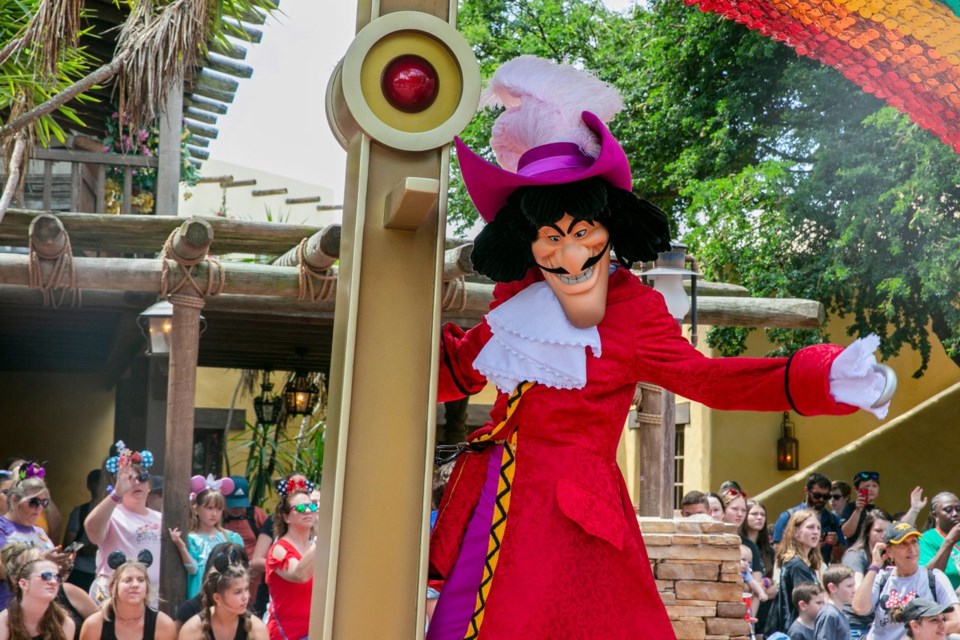ORLANDO, Fla. (AP) — wanted to turn Dalmatian puppies into fur coats, Captain Hook tried to bomb Peter Pan and of early death for Aurora.
But wait, maybe these Disney villains were just misunderstood? That's the premise of a new musical show at that has some people wondering: When did Disney's villains stop wanting to be so … villainous?
The live show, “Disney Villains: Unfairly Ever After,” debuts May 27 at Disney's Hollywood Studios park at the Orlando, Florida, resort. In the show, the three baddies of old-school Disney movies plead their cases before an audience that they are the most misunderstood villains of them all.
“We wanted to tell a story that's a little different than what's been told before: Which one of them has been treated the most unfairly ever after?” Mark Renfrow, a creative director of the show, said in a .
A sympathetic light
That hook — the narrative kind, not the captain — is scratching some Disney observers the wrong way.
“I think it's wonderful when you still have stories where villains are purely villainous,” said Benjamin Murphy, a professor of philosophy and religious studies at Florida State University's campus in Panama. “When you have villains reveling in their evil, it can be amusing and satisfying.”
Disney has some precedent for putting villains in a sympathetic light, or at least explaining how they got to be so evil. The 2021 film, “Cruella,” for instance, presents a backstory for the dog-hater played by actor Emma Stone that blames her villainy on her birth mother never wanting her.
Other veins of pop culture have rethought villains too, perhaps none more famously than the book, theatrical musical and movie versions of “Wicked,” the reinterpretation of the Wicked Witch of the West character from “The Wonderful Wizard of Oz.”
The ” which was “Wicked: The Life and Times of the Wicked Witch of the West,” sparked the trend of rethinking villains in popular entertainment, Murphy said.
“With trends like that, the formula is repeated and repeated until it’s very predictable: Take a villain and make them sympathetic,” he said.
Emphasizing acceptance
The centuries-old fairy tales upon which several Disney movies are based historically were meant to teach children a lesson, whether it was not to get close to wolves (Little Red Riding Hood, The Three Little Pigs) or trust strange, old women in the woods (Hansel and Gretel, Rapunzel).
But they often made marginalized people into villains — older women, people of color or those on the lower socioeconomic scale, said Rebecca Rowe, an assistant professor of children’s literature at Texas A&M University-Commerce.
The trend toward making villains more sympathetic started in the late 1980s and 1990s as children's media took off. There was a desire to present villains in a manner that was more complicated and less black and white, as there was an overall cultural push toward emphasizing acceptance, she said.
“The problem is everyone has swung so hard into that message, that we have kind of lost the villainous villains,” Rowe said. “There is value in the villainous villains. There are people who just do evil things. Sometimes there is a reason for it, but sometimes not. Just because there is a reason doesn’t mean it negates the harm.”
Whether it's good for children to identify with villains is complicated. There is a chance they adopt the villains' traits if it's what they identify with, but then some scholars believe it's not a bad thing for children to empathize with characters who often are part of marginalized communities, Rowe said.
The Disney villains also tend to appeal to adults more than children, as well as members of the LGBTQ+ community who have felt marginalized in the past. They also appreciate the villains' campiness, with some “Disney princesses” gladly graduating into “evil queens.”
Erik Paul, an Orlando resident who has had a year-round pass to Disney World for the past decade, isn't particularly fond of the villains, but understands why Disney would want to frame them in a more sympathetic light in a show dedicated just to them.
“I know friends who go to Hollywood Studios mainly to see the villain-related activities,” Paul said. “Maybe that’s why people like the villains because they feel misunderstood as well, and they feel a kinship to the villains.”
___
Follow Mike Schneider, author of “Mickey and the Teamsters,” on the social platform Bluesky: .
Mike Schneider, The Associated Press




